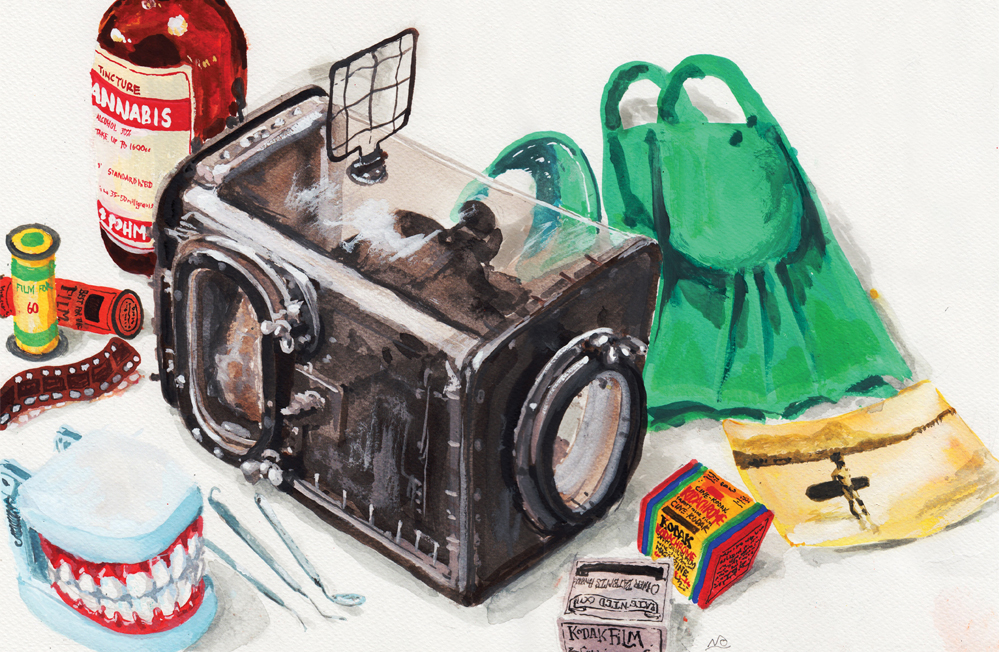A Short History of… Surf Photography
A career in surf photography was once described as “starvation on the road to madness”. I thought it was a Jon Frank line until I found it attributed to American Jeff Divine. Was this going to be one of those provenance brawls, like the origin of the shortboard? I rang Frank and he popped my conspiracy balloon. “I definitely stole it,” he said. “But who owns words, anyway?”
That’s the thing with surf photographers: contempt for the written word. If images are so great, let’s see you do a history of your own industry in 600 – what do you call them? – pixels. See? Adjectives, man. Adjectives.
Most surf photographers are insanely wealthy, anyway. They play tennis with hedge-fund managers. Some of them own superyachts – they’re the ones with no water droplets on the portholes.
The first photo of somebody with a surfboard dates to 1890. It’s anonymous, glorious: a Hawaiian man with an alaia held across his back, Diamond Head behind him.
Surfing’s renaissance man, Tom Blake, took that idea and went further – he invented the water housing. Remember the first time you saw a drone shot? Such was the reaction to seeing surfing from the water. This was 1930: the year the moon was closest to earth in many hundreds of years, resulting in massive proxigean spring tides. What did Blake see as he swam around with his new waterproof device?
Blake’s fever dreams inspired John ‘Doc’ Ball, a Californian dentist who did a contra deal with a patient: gold fillings for an expensive camera, and in 1937 he did a Blake and made himself a ‘water box’ and teamed it with Owen Churchill’s new ‘swim fins’ to chase surfers.
Blake & Ball (yes, it sounds like a hand soap) were doing this before Ettore Steccone invented the squeegee in 1936. Imagine the water droplets! There’s something deliciously perverse about these bobbing obsessives in the lineup, locked in endless battle with tiny particles of the very stuff they’re immersed in.
In the 60s, Canon and Nikon invented lightweight 35mm SLR cameras, just as the first surf mags began to appear. Not having to drag the equivalent of a piano-accordion through the surf, guys like Don James (remarkably, also a dentist), John Severson and Leroy Grannis got ever closer to the action.
It’s said that none of these people understood the power of colour in surf shots until Surfer magazine’s Ron Stoner. Look up his work: he makes you feel like crying and immediately going surfing. Mental health troubles and drug abuse robbed him of his best years but briefly he was happy and productive. He filed his last shots in ‘71, vanished in Hawaii in 1977 and was declared dead in 1994. Matt Warshaw captured him perfectly: “Stoner took the kind of shots that you didn’t want to look at as much as you wanted to step into.”
Art Brewer, Jeff Divine and the late Warren Bolster ruled the ‘70s. Bolster came from skateboarding culture, and made wild, kinetic images. His surfing looked like skating, a celebration of human bodies in flight.
Nothing happened in the eighties until people started photographing Danny Kwock. Don King was the hero, an impressive athlete who was unafraid to shoot the north shore reefs from the water.
From there, the advances in tech meant that electronics become the heroes, and not the humans handling them: the Canon EOS system, Thomas Knoll’s invention of Photoshop in 1990, and digital cameras by 2000. Now we’re hitting 60fps at 4K and Leroy Bellet is the future.
Another recent tech breakthrough: magazines discovered that women can operate cameras. Journalist Elizabeth Pepin-Silva was fed up to the back teeth (dentistry again) with surfing women being depicted as an assemblage of body parts, and became the first published female water photographer. In Australia we have heavy-water hero Shannon Glasson, Judy Scanlon, Hannah Anderson and Fran Miller, and plenty more emerging.
A surf story is just a Word document: a line of random ants stopped by Mortein. It is more or less nothing until the great blue pool of an image gives it depth and dynamism. No writer will admit it, but there it is. Now if you’ll excuse me, I’m late for a soiree on a superyacht.








